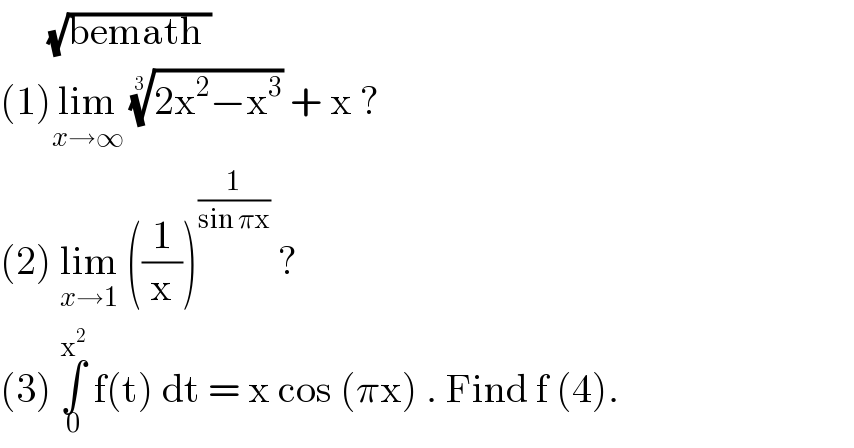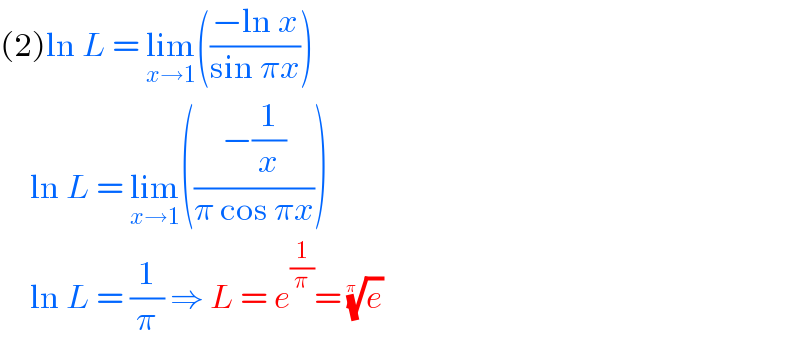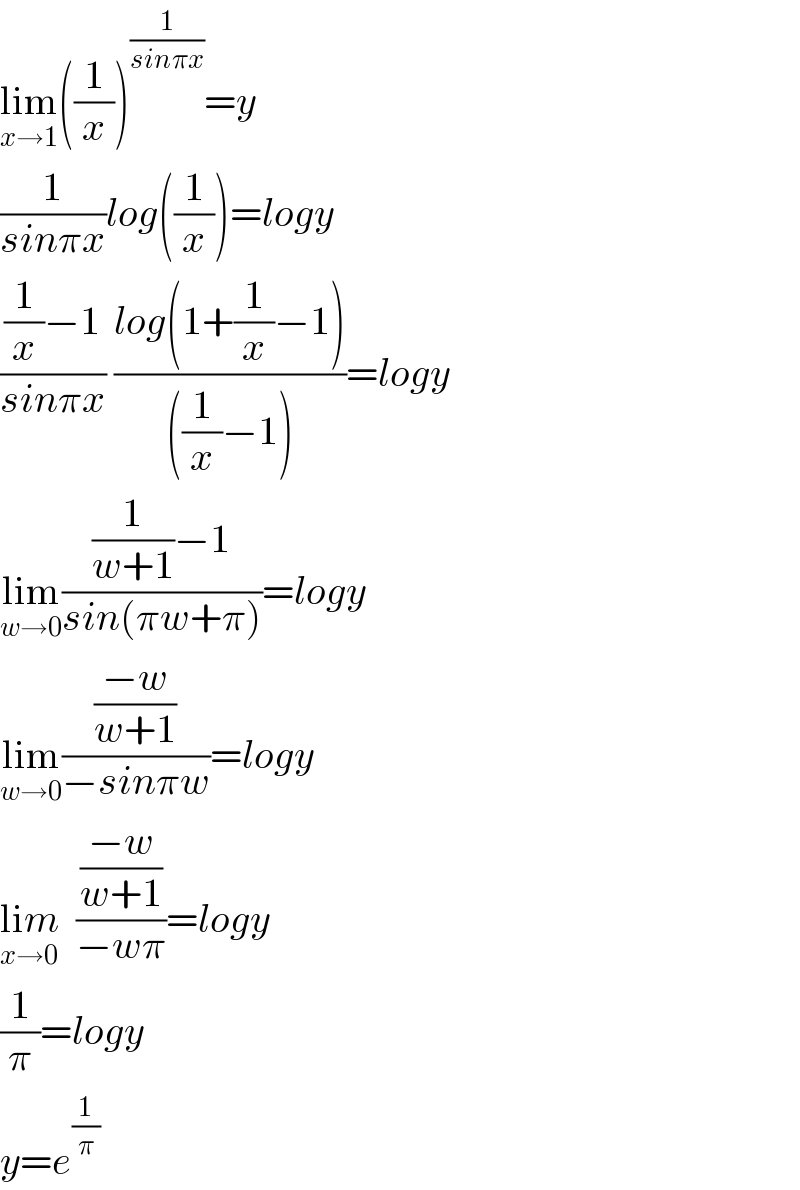
Question and Answers Forum
Question Number 111498 by bemath last updated on 04/Sep/20

Answered by john santu last updated on 04/Sep/20
![let x = (1/t)→ { ((x→∞)),((t→0)) :} L=lim_(t→0) (((2/t^2 )−(1/t^3 )))^(1/(3 )) + (1/t) L= lim_(t→0) (((2t−1)/t^3 ))^(1/(3 )) + (1/t) L = lim_(t→0) ((((2t−1))^(1/(3 )) +1)/t) L= lim_(t→0) ((2t)/(t[ (2t−1)^2 −(2t−1)+1 ])) L= lim_(t→0) (2/((2t−1)^2 +2−2t)) = (2/3).](Q111500.png)
Answered by bemath last updated on 04/Sep/20

Commented by bemath last updated on 04/Sep/20

Answered by john santu last updated on 04/Sep/20

Answered by john santu last updated on 04/Sep/20
![(3) (d/dx) [∫_0 ^( x^2 ) f(t) dt ] = (d/dx) [x cos πx ] ⇒ 2x f(x^2 ) = cos πx −πx sin πx put x = 2 ⇒ 4f(4) = cos 2π−2π sin 2π ⇒ f(4) = (1/4)](Q111510.png)
Answered by mathmax by abdo last updated on 04/Sep/20

Answered by mathmax by abdo last updated on 04/Sep/20

Commented by bobhans last updated on 04/Sep/20

Commented by mathmax by abdo last updated on 04/Sep/20

Commented by bobhans last updated on 04/Sep/20

Answered by mathmax by abdo last updated on 04/Sep/20

Answered by Dwaipayan Shikari last updated on 04/Sep/20

